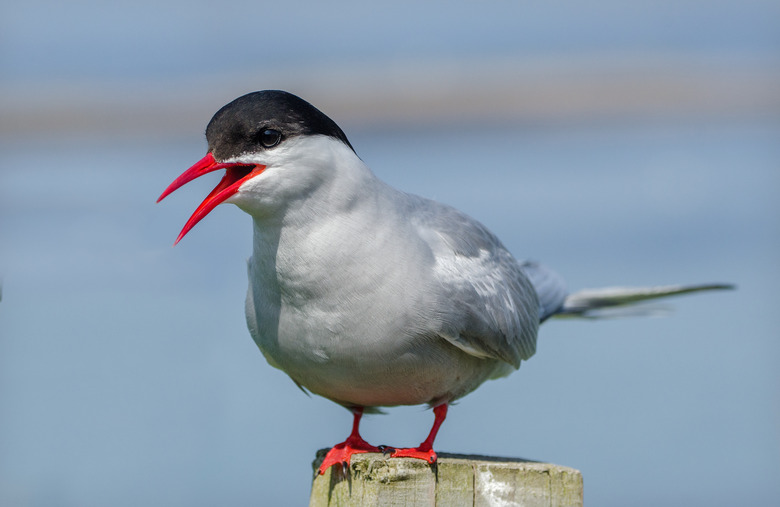Birds That Fly Across The Ocean
Many birds fly across the oceans and between continents in groups to follow food, habitat or weather conditions. These great seasonal movements of bird species are known as migrations. The most famous migrants like swallows and arctic terns travel huge distances across the globe. About 40 percent of the world's bird species (at least 4,000 species) regularly migrate, some traveling across oceans, other traveling mainly overland.
Arctic Tern
Arctic Tern
Arctic terns travel the longest regular migratory route of any animal on earth. Every year these sea birds travel from pole to pole and back, so they experience two summers per year. The round trip is roughly 44,300 miles. Breeding takes place in summer in the Arctic and sub-Arctic areas of North America, Asia and Europe. When Arctic terns are not nesting, they spend almost all of their time in the skies above the oceans, feeding on fish and small invertebrates.
Barn Swallows
Barn Swallows
Barn swallows are a type of swallow with a particularly long migration route. Barn swallows are land birds and breed in large groups across most of the Northern Hemisphere, including North America and Europe. They migrate huge distances across the oceans and land to spend winter all over the Southern Hemisphere. Because swallows feed on airborne insects which are common on land, they minimize the distance of sea crossings by detouring across land when possible. When not migrating, Barn swallows are common around waterways, grasslands and lakes.
Holarctic Wildfowl
Holarctic Wildfowl
Ducks, geese and swans spend much of their time swimming and feeding in waterways such as lakes and rivers. They breed in the Arctic during the summer, and fly south across the oceans to milder climates during the winter to avoid frozen water. Most species remain in the Northern Hemisphere.
Amur Falcon
Amur Falcon
The Amur falcon is a land bird that breeds in Southeastern Siberia. It flies south across the Arabian Sea to spend winter in southern Africa. Because it feeds mainly on insects, the time it can spend at sea is limited.
Northern Wheatear
Northern Wheatear
Considering these small passerine birds are about 6 inches long, the migration route they follow is impressively long. Northern wheatears fly one of the longest migration routes of any small bird. In spring they fly north across oceans from sub-Saharan Africa via Asia, Europe, Greenland, Alaska and parts of Canada. They all then return to Africa in the Autumn.
Cite This Article
MLA
Jackson, Clare. "Birds That Fly Across The Ocean" sciencing.com, https://www.sciencing.com/birds-fly-across-ocean-8428796/. 13 March 2018.
APA
Jackson, Clare. (2018, March 13). Birds That Fly Across The Ocean. sciencing.com. Retrieved from https://www.sciencing.com/birds-fly-across-ocean-8428796/
Chicago
Jackson, Clare. Birds That Fly Across The Ocean last modified March 24, 2022. https://www.sciencing.com/birds-fly-across-ocean-8428796/
